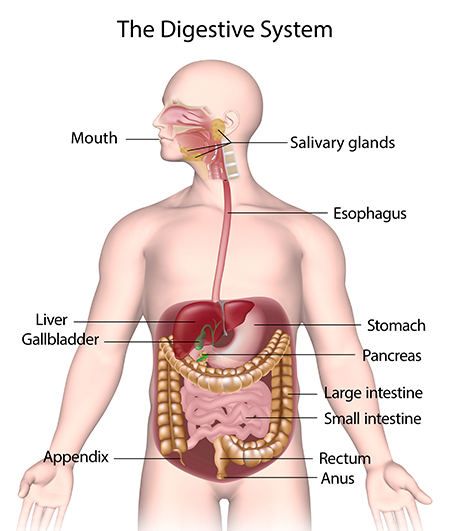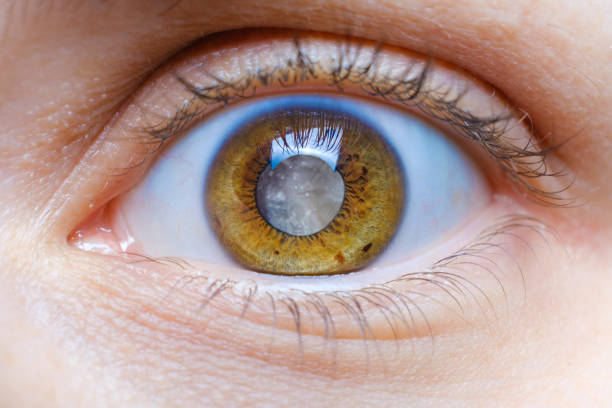When we think of the word “disease,” our minds often conjure images of germs, viruses, or bacteria. But what if I told you that some diseases don’t spread in the usual manner? They hitch a ride with creatures, from tiny mosquitoes to bloodthirsty ticks, which act as unwitting vehicles for the pathogens that cause illness. These illnesses, transmitted through the bites of infected organisms, are called vector-borne diseases. And while mosquitoes are the most well-known culprits, there’s a whole range of creatures—often small, yet incredibly dangerous—that help spread these diseases across the globe.
In simple terms, a vector-borne disease is one that is transmitted to humans or animals through an intermediary organism, known as a vector. A vector can be anything from an insect to a rodent, carrying pathogens from one host to another. This form of transmission differs from direct person-to-person transmission, where the infection is spread via coughing, sneezing, or physical contact.
The biological mechanics behind this transmission are often more intricate than they appear. Vectors, like mosquitoes, don’t just passively carry pathogens; they interact with them, often facilitating their entry into the human bloodstream, where they can multiply and cause serious disease. In this way, the vector acts as both a “carrier” and a “transporter,” allowing the pathogen to infect new hosts that it otherwise might not have reached.
Though the connection between mosquitoes and diseases like malaria has been known for centuries, the scope of vector-borne diseases and their impact on global health has become more apparent in recent decades. Climate change, urbanization, and human migration have created perfect conditions for many of these pathogens to flourish, leading to outbreaks in places that were once considered low-risk areas.
But how exactly do these vectors work, and which diseases should we be most concerned about? Let’s dive deeper into the world of vector-borne diseases to uncover the mechanics of their transmission, the organisms involved, and the ongoing battle against them.
The Tiny Terrors: Mosquitoes and Their Role in Disease Transmission
Few creatures are as synonymous with disease as mosquitoes. These tiny flying insects have been responsible for more human deaths than any other animal on the planet, making them one of the most dangerous creatures on Earth. Mosquitoes transmit a wide variety of diseases, including malaria, dengue, Zika, yellow fever, and West Nile virus. Each of these diseases has had a profound impact on global health, particularly in tropical and subtropical regions.
The process begins when a female mosquito feeds on the blood of an infected person or animal. As the mosquito draws blood, it ingests the pathogens, which then migrate to its salivary glands. The next time the mosquito bites, it injects saliva into the bloodstream of its new host, transmitting the pathogen. In the case of malaria, for example, the parasite Plasmodium travels from the mosquito to the human liver, where it matures and then infects red blood cells.
This process of transmission is known as biological transmission, as the pathogen undergoes part of its lifecycle inside the vector. Malaria is caused by Plasmodium parasites, and the mosquito Anopheles serves as the primary vector. In contrast, diseases like dengue and Zika are caused by viruses that are transmitted by the Aedes mosquito, which thrives in urban areas, especially in places where stagnant water accumulates.
The ability of mosquitoes to carry and transmit such a variety of diseases stems from their adaptability and their enormous numbers. There are over 3,500 species of mosquitoes, and some are far more adept at spreading disease than others. Mosquitoes breed in warm, stagnant water, making tropical regions the perfect breeding grounds. In addition, their ability to adapt to urban environments—where human populations are dense—has only intensified the spread of these diseases.
Efforts to control mosquito populations have met with mixed success. Insecticides, like DDT, once proved effective, but mosquitoes have evolved resistance over time. Furthermore, spraying for mosquitoes can harm other species, including beneficial insects like bees. As a result, scientists have turned to innovative methods like genetic modification, where mosquitoes are engineered to be sterile or incapable of carrying disease-causing parasites.
Ticks: Small But Lethal Carriers of Disease
While mosquitoes steal the spotlight, ticks are no less dangerous. These small, eight-legged arachnids are responsible for spreading diseases like Lyme disease, Rocky Mountain spotted fever, and tick-borne encephalitis. Like mosquitoes, ticks also rely on blood meals to survive, but their method of transmission is a bit different.
Ticks are typically found in wooded areas, grasslands, and places with dense vegetation. When a tick attaches to its host, it buries its mouthparts into the skin and begins feeding. Unlike mosquitoes, which inject saliva into the bloodstream during the bite, ticks often feed for hours or even days, allowing plenty of time for pathogens to move from the tick’s saliva into the host’s body.
The most infamous tick-borne disease is Lyme disease, caused by the bacterium Borrelia burgdorferi, which is transmitted by the black-legged tick (also known as the deer tick). The disease is characterized by symptoms like fever, fatigue, and the signature “bullseye” rash. If left untreated, Lyme disease can cause serious complications, including joint pain, neurological issues, and heart problems.
Ticks are also vectors for Rocky Mountain spotted fever, a deadly bacterial infection spread by the American dog tick, and tick-borne encephalitis, a viral disease carried by certain species of ticks in Europe and Asia. These diseases can be more difficult to diagnose because their symptoms often resemble those of other illnesses, and it’s easy to overlook a tick bite.
The spread of tick-borne diseases is largely influenced by climate change, which has allowed tick populations to thrive in new regions. In North America, for example, ticks are moving into new areas as temperatures rise, increasing the risk of tick-borne diseases in places that were once tick-free. The spread of these diseases has led to an increase in public health concerns, especially as more people venture outdoors for recreational activities.
Beyond Mosquitoes and Ticks: A Broader Spectrum of Vectors
While mosquitoes and ticks are the most famous vectors, they are far from the only ones. A host of other organisms, ranging from fleas to lice, also serve as carriers of diseases. Fleas, for example, are responsible for spreading plague, the deadly disease that decimated Europe in the 14th century. The bacterium Yersinia pestis, carried by fleas, is transmitted when the flea bites a human or animal.
Lice, particularly body lice, can transmit epidemic typhus, a disease caused by the bacterium Rickettsia prowazekii. Epidemic typhus is spread when an infected louse bites a person, defecates, and the feces come into contact with the bite site. The disease can cause fever, delirium, and even death if untreated.
Another fascinating but often overlooked vector is the sandfly, which carries the parasite Leishmania, responsible for the disease known as leishmaniasis. Sandflies are common in tropical and subtropical regions, and their bite can cause skin ulcers, internal organ damage, and even death if left untreated.
In addition to insects, certain species of rodents can serve as vectors for diseases like hantavirus, which is spread through the urine, droppings, or saliva of infected rodents. Humans can contract the disease by inhaling airborne particles from these excretions.
Lastly, snails—particularly freshwater snails—are vectors for schistosomiasis, a parasitic disease that affects millions of people in tropical areas. The disease is caused by a flatworm that is transmitted through contact with contaminated water, where the snails serve as the intermediate host.
How Climate Change Fuels the Spread of Vector-Borne Diseases
As we have seen, vector-borne diseases are heavily influenced by the environment. And in recent years, the changing climate has had a significant impact on their distribution. Warmer temperatures, altered rainfall patterns, and shifting ecosystems are creating new opportunities for vectors to spread diseases.
Rising temperatures allow many species of mosquitoes and ticks to expand their range into regions that were previously inhospitable. For example, warmer winters allow ticks to survive longer, increasing their chances of finding hosts and transmitting diseases. Similarly, mosquitoes are now thriving in places where they previously couldn’t survive, such as parts of Europe and North America.
Changes in precipitation patterns are also significant. Mosquitoes, for example, breed in standing water. A rise in rainfall, or even periodic floods, can create perfect breeding grounds. Conversely, droughts can force animals to congregate near small water sources, increasing the risk of disease transmission.
Human migration plays a role too. As more people move due to factors like war, urbanization, or climate change itself, they may inadvertently bring vector-borne diseases to new areas. Outbreaks of diseases like Zika and dengue in new regions are often linked to increased human mobility, especially in the context of international travel and trade.
Fighting the Invisible War: Strategies to Combat Vector-Borne Diseases
The battle against vector-borne diseases is ongoing, with various strategies being employed worldwide to mitigate their spread. Some of the most common methods of control include:
- Vector Control: This includes the use of insecticides and environmental management techniques like removing standing water to reduce breeding sites for mosquitoes.
- Vaccine Development: Vaccines have been developed for some diseases, like yellow fever and Japanese encephalitis.
- Public Education: Teaching people how to protect themselves through measures like using insect repellents, wearing protective clothing, and avoiding peak mosquito activity times.
- Biological Control: This involves introducing natural predators or competitors to reduce the population of disease-carrying vectors, like releasing genetically modified mosquitoes that cannot spread disease.
- Surveillance and Monitoring: Tracking the spread of diseases and identifying new outbreaks quickly can help contain them before they become widespread.
Conclusion: The Global Fight Against Vector-Borne Diseases
Vector-borne diseases are a major public health concern, affecting millions of people worldwide. From mosquitoes to ticks, fleas, and beyond, the creatures that spread these diseases are a silent threat to our health and well-being. As climate change continues to alter the environment, the risks associated with these diseases will likely grow.
By understanding how these diseases are spread, improving public health infrastructure, and investing in innovative solutions like genetic engineering, we can combat the invisible forces of nature that threaten our communities. However, the fight is far from over, and vigilance is key to preventing the next outbreak.






